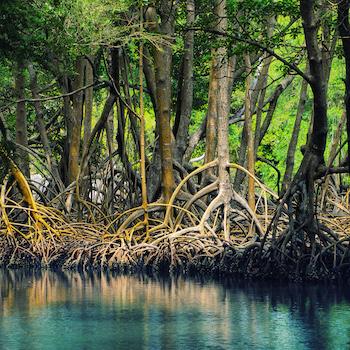Nine American tourists have died this year under mysterious circumstances in the Dominican Republic. Quite obviously, many are wondering if it's safe to visit the country.
That depends on your definition of "safe." What one person considers an unacceptably high risk another may consider quite trivial. That's because there are two factors at play: (1) Mortality statistics; and (2) The relative importance we place on various experiences. Let's unpack these ideas.
Deaths of U.S. Citizens Abroad
There are a couple of different approaches to answer the question, "Is the Dominican Republic safe for Americans?" One is to examine the number of deaths due to non-natural causes among American citizens over time in the Dominican Republic. The U.S. State Department keeps track of these numbers in a publicly accessible database (which includes both tourists and expatriates). From 2008 to 2018, here are the number of non-natural American deaths in Dominican Republic:
2008: 19
2009: 32
2010: 22
2011: 27
2012: 13
2013: 18
2014: 19
2015: 30
2016: 18
2017: 17
2018: 13
In this context, from a purely statistical perspective, the nine mysterious deaths reported in 2019 don't seem out of the ordinary. However, the non-natural deaths from 2008 to 2018 were largely due to drowning, motor vehicle accidents, homicide, and suicide. The deaths making headlines in 2019 occurred among supposedly healthy people who suddenly fell ill. Anecdotal reports suggest some type of poisoning.
Another way to examine risk is to compare non-natural mortality rates for Americans dying in Dominican Republic to those of other countries. (Keep in mind that these risks are rough estimates. A tourist only visits a country for a very short period of time, but we generally think of mortality rates as annualized figures.)
According to Newsweek, these are the most popular destinations for American citizens:
By far, the most popular destination for Americans was Mexico, which welcomed more than 35 million of us in 2017. Canada processed 14.3 million American travelers, the United Kingdom more than 2.8 million, the Dominican Republic 2.78 million and France 2.36 million.
So let's make a chart using this data from 2017, keeping in mind the caveats that (1) the non-natural death data includes not only tourists but business travelers and expatriates; (2) the non-natural death data includes accidents and suicides; and (3) the calculated mortality "rate" is just a rough estimate since Americans don't generally spend an entire year in a foreign country.

The numbers are pretty clear. Among the top five most popular tourist destinations for Americans, Mexico is by far the most dangerous (in 2017, anyway).
Whether Something Is 'Safe' Depends on What You Value
We can't really answer the question, "Is traveling to Dominican Republic (or Mexico) safe?" without putting these figures into further context. That requires us to examine the relative importance that we place on various experiences.
In 2017, there were 37,133 Americans who died in car crashes, a mortality rate of 114 per million people. So, driving in your car is far, far more dangerous than traveling abroad.
But, maybe that's not a fair comparison. Most Americans need to drive a car to get to work, take the kids to school, and get groceries. Very few people actually need to go to Mexico or the Dominican Republic. So, it could be argued that car crashes are a necessary risk but dying in Mexico is not a necessary risk. Ultimately, there's no good way to pick the "correct" answer. It depends on what you personally value and what you consider to be an acceptable risk.
I travel to Europe roughly twice a year. To me, the risk of dying in the Dominican Republic (or Mexico) is unacceptably high by comparison. So, I choose to avoid those places. (I would particularly wait to visit the Dominican Republic until we figured out why Americans are dying so people would know how to avoid the risk. If the deaths are due to something systemic, like a pesticide or chemical contaminant, people could then at least plan accordingly.)
However, that's my personal opinion. To me, a beach is a beach, and Mexico and Dominican Republic are nothing special. I could enjoy something very similar in the relative safety of the Hawaiian Islands. But others strongly disagree and have plans to go. By all means, do so. The risk, compared to so many other mundane things in life (like driving), is quite small.




